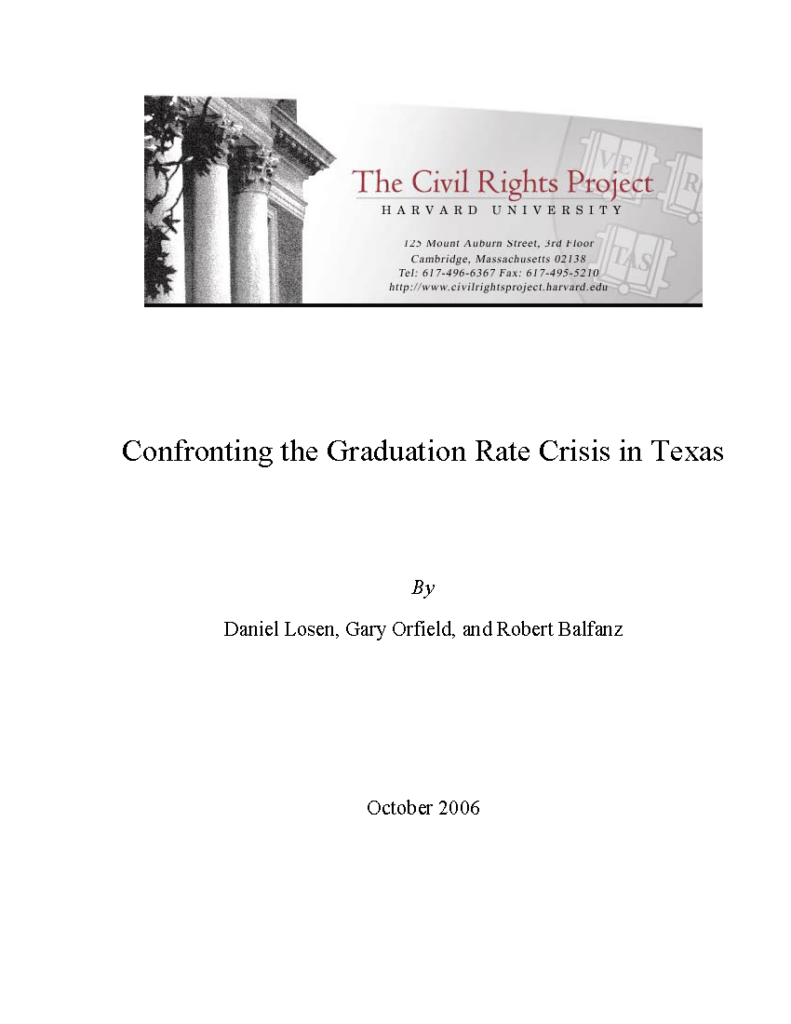Foreward:
Since sponsoring the first national research conference in many years on high school dropouts in 2001, the Civil Rights Project has been working across the country on reversing the terrible loss of talent and the destruction of lives that take place when millions of students, especially Latino and African American, are sent out into adulthood without any ability to find good jobs or enter college and make their way toward the American dream. This is not an ideological issue; many business leaders share the concern of civil rights leaders about the dangerous loss of human potential in a nation that faces fierce global competition, and whose next generation depends on the education of groups historically excluded or undereducated in our schools.
Texas has had an extremely influential role in the making of educational policy. Texas has the destiny of one-fifth of the nation’s Latino children in its hands. Texas has many tools and leaders who could produce a breakthrough on high school completion; and, according to the Federal Reserve Bank of Dallas’ 2005 report, it does not have any option if it is to be competitive in the next generation. It can either address this issue or begin to slide backward in the average educational level of its rapidly changing workforce.
In civil rights terms, completing high school is an absolute necessity for young people. If half of the Black and Latino young men in the state are in the labor market without a diploma, these communities face mortal risks and will see their dreams shrivel.
What needs to be done is simple. We need honest information clearly presented. We need serious accountability for real increases in graduation rates. We need counseling and support for kids trying to pass through the tough adolescent challenges of poor neighborhoods, gangs, and families under stress. And we need effective, challenging, and interesting instruction to bring students up to speed and reengage them with school. We need to realize that segregation by income, race, and language harms kids’ futures and then do something about it. And we need to make certain all of our high schools have real paths to college and decent
jobs.
Gary Orfield
In compliance with the UC Open Access Policy, this report has been made available on eScholarship:
